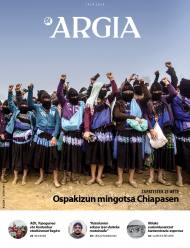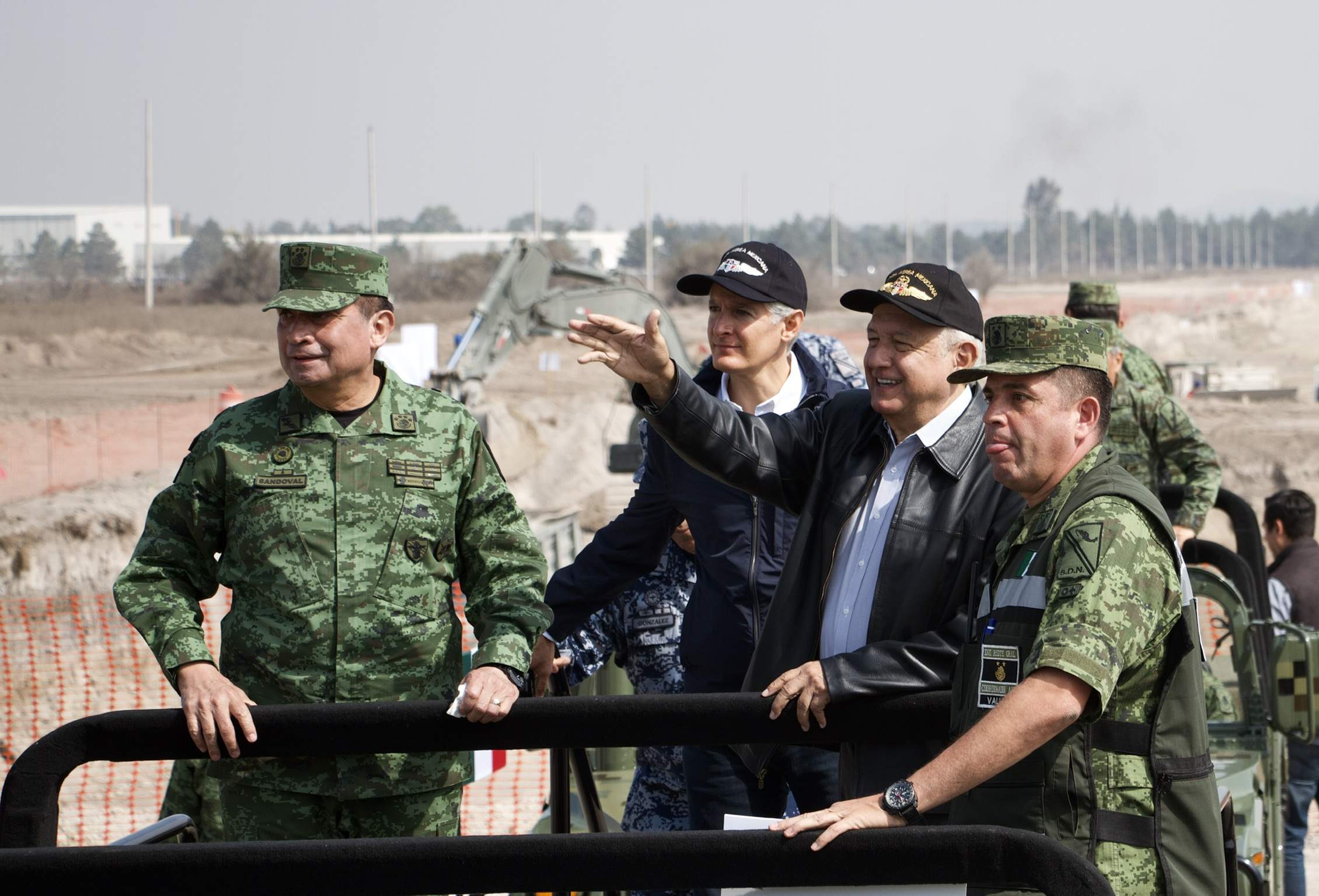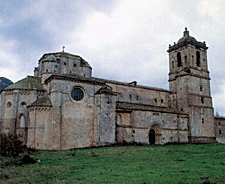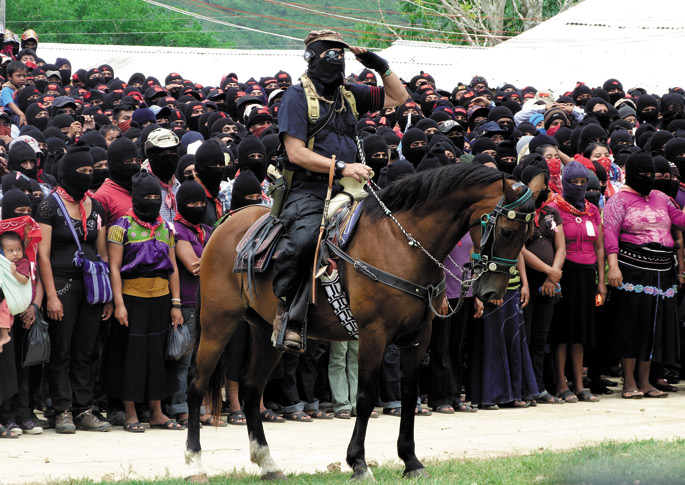Sour Celebration in Chiapas
- Jérôme Baschet (1960) is a historian. Having worked as a professor and researcher at the French School of Higher Studies of Social Sciences EHESS, he is currently a professor at the Autonomous University of Chiapas. From San Cristobal de Las Casas he has told the bitter celebration of the 25th anniversary of the Zapatista insurrection.
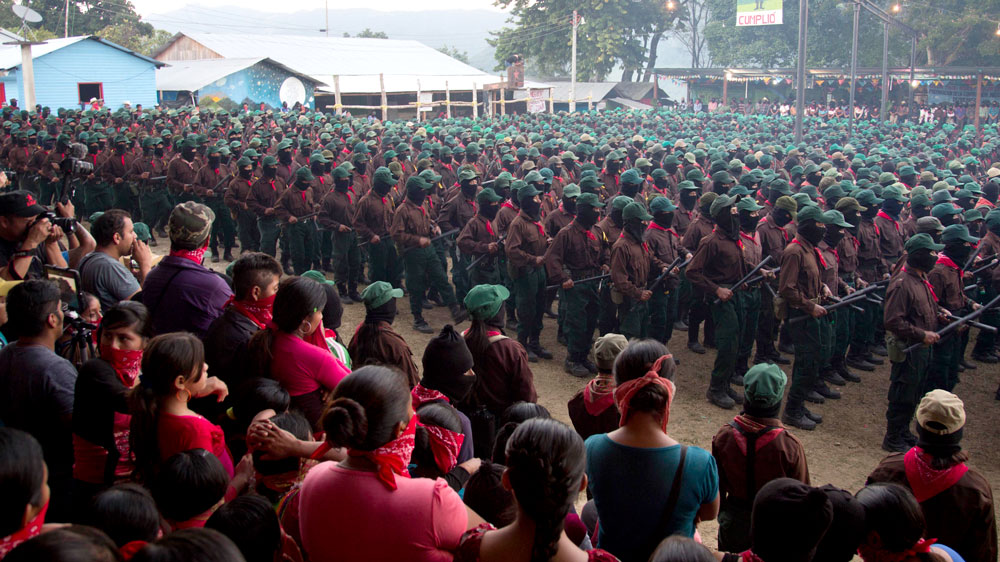
The Zapatistas of Chiapas have recently celebrated the 25 years of the revolt of 1 January 1994. With this armed uprising, they said “Enough!” to the colonial domination of indigenous peoples for five hundred years, to the perfect dictatorship of the Institutional Revolutionary Party for six decades, to the neoliberal policies of the North American Free Trade Agreement (NAFTA) and, more broadly, demonstrated that the end of the history of capitalism delatred all by the distinists was a lie.
The revolt has built up a very relevant experience of political autonomy, based on the demand for 30 autonomous municipalities in December 1994 and with the constitution in 2003 of the five Councils of Good Regional Government. Since then, the Zapatistas have developed their own models of government and justice, as well as their own health and educational systems and their own productive activities; they have relied on the collective ownership of the land and on the development of new forms of auzolan to obtain material support for the organization of autonomy.
The Zapatistas autonomously reaffirm their life of self-determination, rejecting the capitalist decisions that would strengthen and deny the existence of the community. Autonomy is also the attempt to develop forms of popular self-government in a context of total rupture of the Mexican State.
This experience is taking place in a territory of extension such as Brittany, something bigger than that of the Basque Country, and it has been developing continuously for a quarter of a century.
We therefore have reason to say that the Zapatista experience is a very bright star in the sky of our hopes and desires – adding that it is a star that is touched with fingers and meets its inhabitants. That is why those who came to celebrate the 25th anniversary of The Caracol Reality, after a long road to the Lakandona jungle, were willing to enjoy the joy of all, because this rebel experience has been able to overcome so many attacks, has resisted the wear of time and has shown undeniable creativity to this day.
However, those days had never been so festive. Commander Moses, without shaving, said: “We don’t have time to celebrate the 25th anniversary.” In fact, the situation was not reflected in the words of the Zapatista spokesman, but in the fact that the EZLN recalled its military character: the Zapatista army has not disappeared, although in the last two decades it has been delayed to the background.
When the commanders reached their horses, they entered the snail infinitely dressed in uniformed Zapatistas, making noise with the clubs they brought in their hands, at the same pace as their steps. 3,000 Zapatistas in total, from the five autonomous regions, part of the EZLN reservists. The first to come to Zapatista lands would think it was a well-known rite to celebrate the 1994 uprising. It was none of that: the festivities of 31 December are held without a military presence, like most of the Zapatista concentrations.
The uniformed can be seen from time to time in security tasks, especially in La Verdad, since Galeano was raided in May 2014, but in order to find a military exhibition like the one on 31 December, we have to go back to history until the summer of 1994, when the National Democratic Congress of Guadalupe Tepeyde met, in which the Zapatista soldiers marched with weapons, a nuance. This non-military character of the Zapatista celebrations is logical, since since the truce of 12 January 1994 the EZLN has decided not to use weapons aggressively, giving priority to the construction of autonomy and trying not to respond to the provocations of paramilitary groups such as the federal army.
With the ‘scenography’ and the chosen place on this occasion, the Zapatistas announced the return to the time when they began their adventure in an acute and raw speech by Commander Moses, explaining the position of the EZLN before the new government of Mexico. The analysis of the situation generated by the election of Andrés Manuel López Obrador is no surprise to anyone, as it was advanced last August. On this occasion, however, a message has been sent to the new power that has been in power since 1 December. The EZLN has no hope in the new Lehendakari: it is a counter-master of more globalized capitalism, more and more finance, despite the contrary belief of 30 million Mexican voters.
Sub-commander Moses has focused his criticism on the projects that the new president is promoting more energetically than the previous ones. López Obrador justifies these projects in the fight against progress, employment and poverty, with his well-known claim that all those who oppose them are conservative, reactionary, enemies of collective well-being, except anachronistic primitivists. But these mega-projects for indigenous peoples, and not just for them, bring to the bottom the theft of their lands and the rapid destruction of their lives. “We realize that this time they come to destroy us, to destroy us indigenous peoples,” says Moses.
One of these major projects affects the isthmus of Tehuantepec. In this regard, wind mills are being expanded, but also the creation of a unique economic space and a multimodal means of transport between the oceans to make competition for the Panama Canal, which could never be realized by
the most neoliberal governments. Another project involves the planting of one million hectares of fruit trees and trees, mainly in the southeast of Mexico (Oaxaca, Chiapas, Tabasco and Yucatán). This is what has aroused suspicions about Adolfo Romo: López, who holds the key to the relations between Obrador and the employers, is a well-known man from the agro-Mexican industry, and has in Chiapas a seminar that produces 20 million papaiondo a year.
But Deputy Commander Moses has especially highlighted the Maya Train, which would link the Palenque of Chiapas with the main tourist and archaeological centers of Yucatán. With this project they aim to increase the exploitation of natural resources in the peninsula, which have already knocked down more than 14,000 square kilometres of forest between 2000 and 2016, and to multiply the tourist spaces with privatisation, grooming of the soil and pollution of the sea slope.
López Obrador has also complained that tourism has so far concentrated in the immediate vicinity of Cancun. Besides the fact that the project itself is devastating – the slogan of the Lehendakari Modernizer is “one, two, three… one hundred Cancun” – the way to announce it is an unbearable provocation for the Zapatistas. In fact, on December 16, the new lehendakari came to Palenque, a few kilometers from the Zapatista Roberto Barrios Caracol, and to celebrate the beginning of the work he made a false Maia rite in honor of Mother Earth. Moses ironically said that López Obrador had come to ask Mother Earth for permission to destroy her and that if she had been able to answer her, she would have sent her to the ground… Giving the name of her ancestors to the project is an insult to the Zapatistas, and the parody, the mockery and the humiliation of the Mayan ritual: Mother Earth was the object of a concealment project that was not even questioned to its inhabitants.
Indeed, since the projects are to be carried out in areas where indigenous peoples reside, Treaty 69 of the International Labour Organization, ratified by Mexico, foresees the need to submit their people to a free and informed preliminary questionnaire. In other words, the new command pretends to bow to Mother Earth and then plunder it better and violate international agreements on the rights of indigenous peoples, which are also laws in Mexico.
Faced with this terrible threat of the capitalist octopus, despite being disguised with the appearance of progressism, the Zapatistas have shown a very severe attitude: “We will not let them do whatever they want,” “If they come to provoke us, we will defend ourselves,” “We will defend ourselves, we will fight if necessary.” The warning to the new authority has been very clear and that gives meaning to the military exposition before the speech: the 3,000 people we have seen set before us mean that they are prepared to give life to defend their territory and the autonomy they have built.
.jpg)
We must not understand from the message that they return to the armed struggle. It is now a question of defending themselves, of defending the civil construction of the autonomy that is at the heart of the Zapatista project. Moses said: everything we have achieved so far is the result of our effort and experience and “we will continue to build”. The challenge is to follow the civil experience of autonomy, but to do so, it is now forced to defend itself against the threats coming from the new government, with all the necessary means.
Another thing about Moses' speech has also caused a number of gossip. The spokesman for the Zapatistas has repeated over and over again that “we are alone” and that has been a tough blow for many. What did it mean, all the alliances that the EZLN has woven around it for a quarter of a century, through the National Indigenous Congress, the Indigenous Council of the Government, The Sixth that wants to be the network of struggles of Mexico and the whole planet, all the solidarity groups created around the world… all that has remained in nothing? Has it not been possible to overcome inertia and divisions and to advance in the configuration of “networks of rebellion and resistance” at international level as in Mexico?
In the context of all the presentation we have to understand what you want to highlight: on the one hand, the strategic decision of the Zapatistas before the new government and, on the other, it is a decisive moment in the path of the Zapatista experience. Mexican voters have decided by a majority [López Obrador has been elected president] and have ignored the warnings of the Zapatistas. But “today we are alone” echoes the phrase “we were alone when we rebelled 25 years ago”. In other words, the decision at the time was taken only by the EZLN, and today's decision also, that the decision to be prepared for the fight against the new Mexican president belongs only to the EZLN.
But why that decision? According to the analysis of the Zapatistas, the new Mexican authority consists in delving into the capitalist project for unscrupulous assumed developmentalism, ignoring the growing concern about climate warming and almost never worrying about ecological arguments. Although López Obrador is not the negationist of climate change, his behavior is not far from Trump’s, by the way, that both have very friendly relations.
Undoubtedly, this analysis takes place in the conduct of so-called progressive governments in Latin America, especially in Brazil, Bolivia, Ecuador and Argentina, in the last fifteen years. Although there are some positive aspects in these cases, two main statements can be made: on the one hand, the weakening of social movements and, on the other hand, the struggle of the indigenous people, using cooptation, the loss of autonomy, division and self-care, with the excuse of not playing right or to the extreme right; on the other hand, the attack on the sale of everything, the bigger and worse infrastructures, activism. In other words, progressism has become one of the most effective political models, at least temporarily, to strengthen the power of the capitalist octopus and to respond to its insatiable hunger.
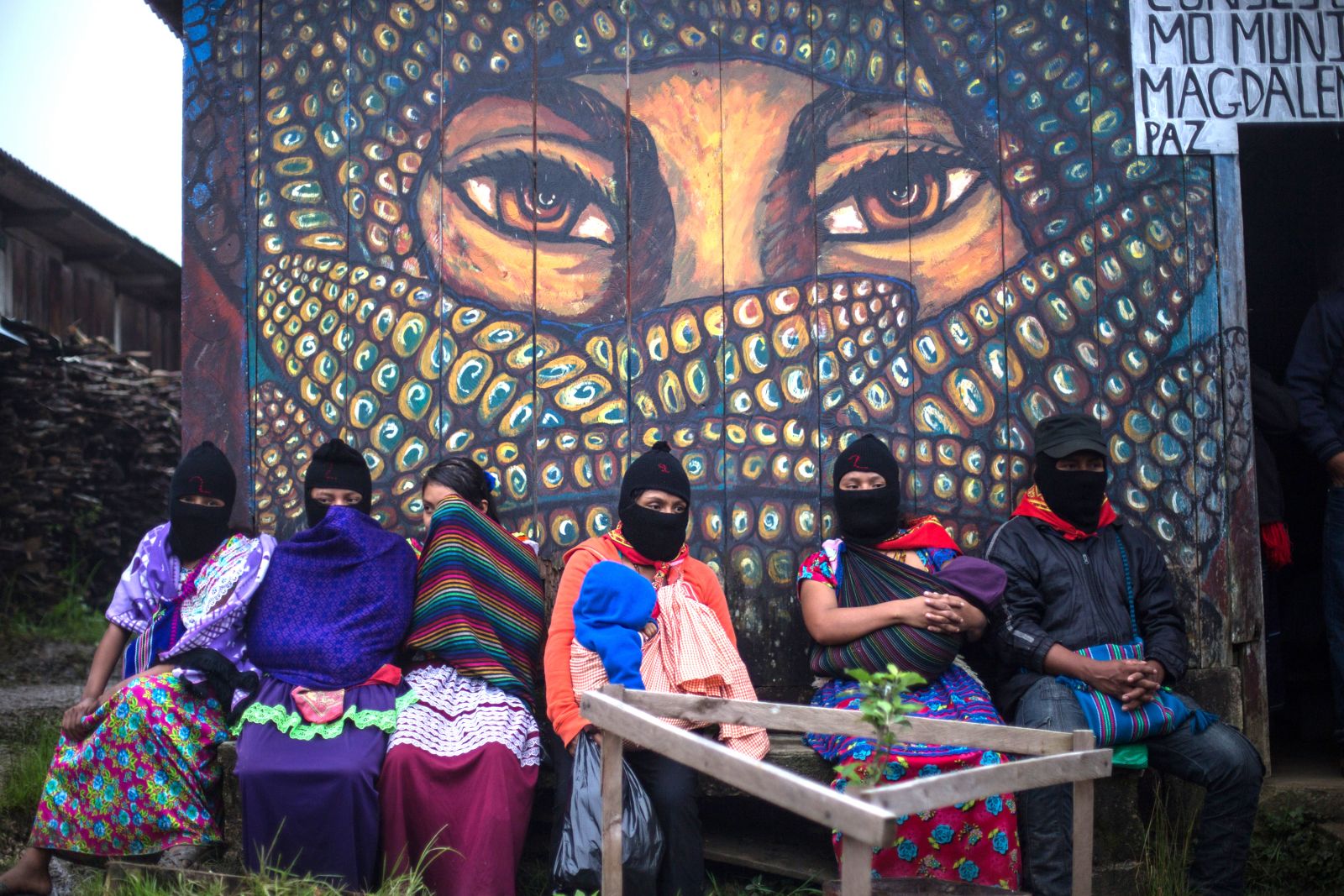
The Zapatistas have decided not to wait until these policies are progressively showing their lethal effects – or, if necessary, to let Mexicans also disappoint and open the next stages, following the models of Argentina or Brazil, opening the way to the ultra-fast or extreme right. The Zapatistas challenge the new authority to choose between the two solemn commitments that have been made in the elections: one, to take forward the major infrastructure projects announced; two, never tread on the Mexican people. They are obliged to choose the area in which each one of them is located. And finally, the Zapatistas prepare to defend what they have built for a quarter century, the experience of a rebel autonomy whose grandeur and radicality are not so important in the world.
What about us? Are we happy to see unreservedly how they threaten and attack this experience? This risk, moreover, is happening when the experience of Syrian Kurdistan is also being seriously threatened by the withdrawal of the United States and by Erdogan-Trump entity. As an Argentine friend has written, without zapatism – and we will add, without the democratic confederalism of Rojava – this world would be much more fearful than it is today. l
Sevillako Atletismo Mundialean agertutako «Repatriation bask prisoners» mundura barreiatu du Presoekin Elkartasun Kideak taldeak. Hogei minutu luzez gainera. Espainia aldean alderdien arteko liskarra sortu bazuen, Euskal Herrian, oro har, irribarra piztu du.
“Ez da gizonen eta sistemaren lana guri askatasuna ematea; kontrara, sistema kapitalista patriarkalaren lana gu menpeko egitea da”, esan zuen emakume batek zapatistek antolatutako emakumeen lehenengo Nazioarteko Topaketaren irekiera ekitaldian, Desinformémonos... [+]
Sistema kapitalista, matxista eta patriarkalaren aurka ari diren emakumeen nazioarteko topaketak deitu dituzte EZLN eta Batzar Klandestino Iraultzaile Indigenak. Martxoaren 8, 9 eta 10ean egingo dituzte Txiapasko Tzotz Choj eremuan, Morelia Karakolan. Harrera martxoaren 7an... [+]
EZLN Askapen Nazionaleko Armada Zapatistak antolaturiko V. Indigenen Kongresu Nazionalean 2018ko estatuko hauteskundeetan parte hartzeko asmoa azaldu dute. Hautagai independente bat aurkeztuko dute horretarako, emakumezkoa.
Txiapasen Aldeko Taldeak, Esko Zap %100 amets haziak lelopean, egitarau zabala prestatu du aste zapatistarako.
Sylvia Marcos-ek “Más allá del feminismo. Caminos por andar” liburua aurkeztu du Mexikon. 20 urte bete dituen mugimendu zapatistan emakumeek eginiko lorpenez eta feminismoa deskolonizatu beharraz dihardu.
“EZLN ez da mintzatuko gehiago nire ahotik” esanaz amaitu zuen hitzaldia Marcos azpikomandanteak maiatzaren 24an mila indio zapatista eta beste hainbeste kanpotarren aurrean. Bere izarra itzali aurretik, Marcosek azaldu zituen Mexikoko Chiapasen burutzen den... [+]









